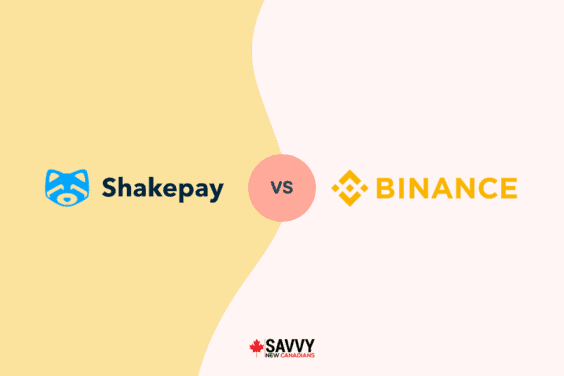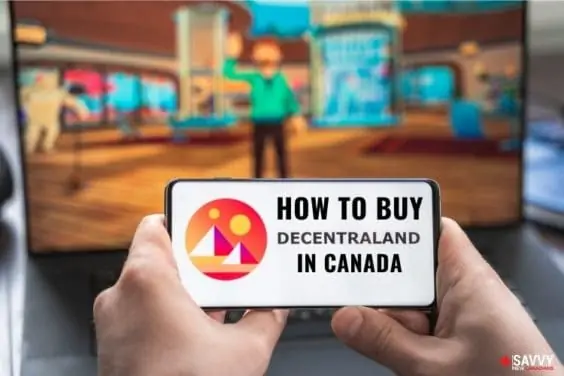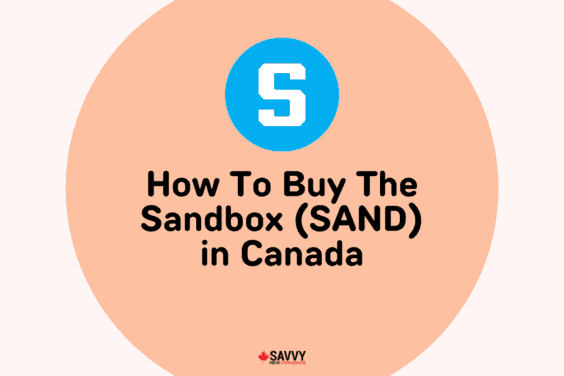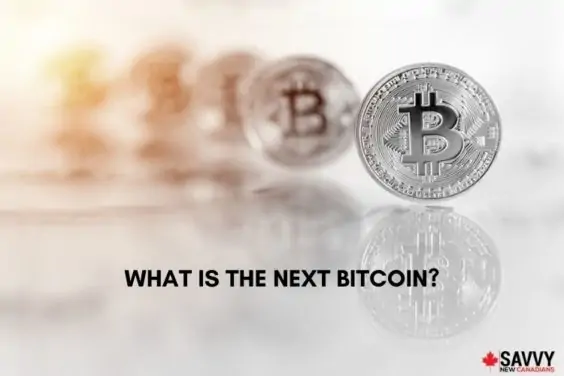What is Solana crypto? This post covers how Solana SOL works, how to buy Solana in Canada and the U.S., the best Solana crypto wallets, and more.
Bitcoin and Ethereum —the first and second cryptocurrencies in the world by market capitalization — have played a huge role in the growth of the crypto industry.
They’ve paved the way for thousands of crypto projects to be launched and pioneered the acceptance of digital coins as an alternative to fiat currency. Today, the crypto industry is valued at $2 trillion.
However, both Bitcoin and Ethereum blockchains face the so-called blockchain trilemma, which makes it difficult to achieve decentralization, scalability, and security in a single-layer solution.
That results in low throughput, high gas fees, and high latency, preventing networks like Ethereum and Bitcoin from reaching their full potential.
Many crypto projects have been launched to attempt to solve these impending issues facing their predecessors, but none has been able to address them all.
The Solana blockchain proposes to offer a solution to the blockchain trilemma without sacrificing decentralization
What is Solana?
Solana is a high-speed, third-generation blockchain that offers Decentralized Finance (DeFi) solutions. Like Ethereum, the Solana blockchain facilitates the creation of decentralized applications (DApps) and supports smart contracts.
The high functional open source project aims to solve scalability issues in the DeFi market and slash gas fees through a hybrid consensus algorithm.
To achieve that, the Solana protocol combines proof-of-history (PoH) and proof-of-stake mechanisms to increase the network’s throughput to 50,000 transactions per second, making DeFi accessible at a large scale.
The Solana project was founded in 2017 by Anatoly Yakovenko, a former Qualcomm engineer, and his colleague Greg Fitzgerald, with whom they founded the Solana Labs.
The Solana protocol and the SOL token were launched to the public in March 2020.
Related: Which Cryptocurrency Will Explode in 2022?
How Does Solana Works?
Unlike other crypto networks that use the Proof of Stake (PoS) or Proof of Work (PoW) consensus mechanism, Solana uses a hybrid consensus model to validate transactions.
The Solana protocol runs on a combination of a new cryptographic mechanism called Proof of History (PoH), and the underlying Proof of Stake (PoS) mechanism of the blockchain.
PoH is the main component that sets the Solana blockchain apart. It trucks timestamps and local timezones to establish a trustless source of time on the blockchain.
That helps facilitate chronological storage of historical data and achieve node synchrony by recording successful transactions and the time that has passed between them to ensure an immutable record of previous events.
Then the PoS consensus comes in to monitor the PoH processes by validating each sequence of blocks produced by the PoH algorithm.
Other important technologies that make Solana amplify scalability while maintaining the network’s security include:
- Tower BFT: Minimizes transaction latency and messaging overhead, which helps speed up the consensus process and the entire blockchain’s functionality.
- Turbine: Breaks data into smaller packets to facilitate seamless movement of data to nodes on the blockchain.
- Gulf Stream Protocol: Reduces confirmation time and leader switching times to diminish memory pressure on validators in the pending transactions pool.
- Sealevel processing engine: Allows processing of thousands of smart contracts calls at once.
- Pipelining infrastructure: Helps validate transactions faster and replicates transaction details across nodes, regardless of hardware limitations.
- Cloudbreak protocol: Responsible for the network’s scalability. It ensures that data is simultaneously read and written across the network to provide scalability.
- Archives: Download data from the blockchain into its distributed ledger storage.
What Makes Solana Unique?
First, Solan uses a hybrid model that combines PoH and PoS consensus mechanisms, along with a diverse set of technologies to make its network scalable without sacrificing decentralization.
That makes it a layer-one solution that doesn’t need to shard or implement layer two or off-chain solutions to maintain speed and scalability.
Thus, developers can build directly on the blockchain, making network operations thousands of times faster than Bitcoin or Ethereum blockchains.
Such scalability helps boost usability and decrease validation times for transactions and smart contracts’ execution.
The net result is an increased throughput of over 50,000 transactions per second and a negligible average transaction fee of about $0.00025.
What is The SOL token?
SOL is the native token of the Solana blockchain.
The SOL token is used to pay for gas fees and staking in order to validate transactions through the network’s PoS consensus mechanism. The SOL token also enables users to participate in the protocol’s governance.
Though it’s an inflationary token, SOL coins have been designed with a 1.5 inflation rate and a decreasing supply.
Currently, there’s a circulating supply of about 300 million SOL tokens, with the Solana Foundation announcing that a maximum supply of about 500 million SOL coins will be released in circulation. To reduce the overall supply, Solana’s fee tokens will be burned.
Only 38% of SOL tokens are reserved for the community, with about 60% being controlled by the Solana Foundation and the project founders.
What’s The Solana (SOL) Price?
Since its release in March 2020 along with the Solana beta testnet, the SOL token has performed exceptionally well.
As of this writing, the Solana cryptocurrency is ranked the 7th cryptocurrency on CoinMarketcap, with a market cap of over $48 billion, a fully diluted market cap of over $82 billion, and daily trading volume of more than $3 billion.
The current SOL price is hovering around $162. That’s a whopping 740X its ICO token price of $0.22, only about 18 months from its release date in 2020, or 5400X ROI on the initial seed sale held in April 2018 at $0.04.
That’s why the Solana project has been labeled “Ethereum’s Killer.”
Uses for Solana SOL token
- Paying gas fees: Being the utility token for the Solana blockchain, SOL is used to pay gas fees for transfers and smart contracts.
- Staking:Participating stake their own SOL to help secure the network in exchange for rewards in the form of new SOL and a cut of fees.
- Governance token:Holders of SOL tokens can participate in governance processes by voting on future upgrades and governance suggestions by the Solana community.
- Trading: You can buy and sell SOL crypto on many crypto exchanges like Coinbase, Binance, and others.
How to Buy Solana
Buying Solana crypto tokens is pretty much like buying any other cryptocurrency.
Due to its top speed and low transaction fee, the SOL token has gained a lot of traction in the crypto market and attracted interest from both small and institutional traders.
Thus, almost all the top crypto exchanges list Solana tokens.
Top crypto exchanges where to buy Solana in Canada include:
- Newton
- Wealthsimple Crypto
- Binance
- Gate.io
- KUCOIN
- Coinbase
Top places to buy SOL cryptocurrency in the US include:
- Crypto.com
- Binance US
- Coinbase
- OKEx
- BitFinex
Most of these exchanges allow you to buy Solana using the fiat currency of your choice, while others may require you to buy using another cryptocurrency, like Bitcoin or Ether.
To buy Solana tokens, simply sign up for an account at an exchange that supports Solana. Most exchanges follow Know Your Customer/Client (KYC) and anti-money laundering (AML) requirements.
So you’ll need to disclose and verify your identity through a government-issued photo ID and proof of address documents, like a bank statement or utility bill.
Once your account is verified, load money into it via bank transfer, or by linking your debit/credit card to your account. You can also add another cryptocurrency, like BTC or ETH if the platform allows you to trade Solana against other cryptocurrencies.
Popular Solana pairs include SOL/CAD, SOL/USD, SOL/BTC, SOL/GBP, SOL/AUD, SOL/ETH, SOL/EUR, and SOL/JPY.
Simply select your desired SOL pairing and enter the amount of SOL you want to purchase or the amount of paired fiat currency or crypto you want to spend. Check to ensure everything is correct and confirm the transactions.
You’re done! That’s how simple it is to buy Solana crypto tokens.
Best Crypto Wallets for Solana
You’ll need a safe place to store your SOL tokens.
You can leave them to sit on the exchange’s wallet, but since exchanges often suffer security breaches and hacks, it’s advisable to move your tokens to a safe wallet where you have full control over your private keys.
Top Solana wallets to store your tokens include:
- Ledger Nano X
- Ledger Nano S
- SolFlare
- Sollet
- Trust Wallet
- Coin98
- CoolWallet Pro
- Trezor
- Atomic
- Exodus
Related: Best Crypto Wallets in Canada.
Solana and The Future
Solana has been blazing a trail in the DeFi crypto market. First, the Solana project has received a warm welcome and wide support from the DeFi community.
Though it’s still in beta, over 400 projects spanning NFTS, stablecoin projects, wallets, DeFi, and Web3 have been launched on the Solona blockchain.
Again, the Solana protocol has attracted interest from high-profile companies in the DeFi space, including Serum, ChainLink, Band Protocol, Nazomi, Gravity, Tether, and Switchboard.
Top among them is the Degenerate Ape Academy project, which has placed Solana at the center of the NFTs crypto boom with the 13ths rarest ape acquired by Moonrock Capital at 5980 SOL, equivalent to $1.1 million at the time.
Just about 18 months from its launch, it has risen to become the 7th largest crypto network by market capitalization.
That’s largely due to its high throughput and negligible gas fees compared to Ethereum and Bitcoin. It seems like Solona will finally solve the blockchain trilemma in the near future. No wonder it’s been labeled the “Ethereum Killer!”
Related:
- Best Crypto ETFs in Canada
- Best Bitcoin ETFs
- How To Buy Shiba Inu in Canada
- How To Buy Tether USDT
- How To Buy Ripple XRP in Canada
- How To Buy USD Coin
Disclaimer: Cryptocurrency is a volatile and speculative investment. If you decide to invest, we recommend you do your own research and only commit funds you can afford to lose.



